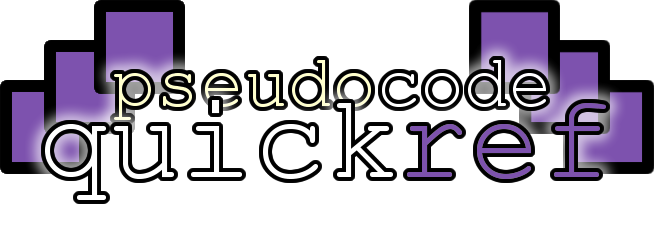

This resource is designed as a quick reference or revision guide. It has not been endorsed by any exam boards. If you spot any mistakes, please let me know and I'll fix them asap.
This website aims to give a quick reference for VB.NET, Python and C# and pseudocode and is aimed primarily at teachers & students working towards a GCSE or A Level in Computer Science
VB.NET, Python and C# are programming languages designed to be understood and followed by computers. Pseudocode is not a programming language: it's written to be understood by humans so that they can turn it into any programming language.
Each skill has example code in Python, C#. You can also enable VB.NET and Pseudocode for OCR GCSE if you'd find that useful.
If you know what you're looking for, use the search bar above the categories list.
A function is like a procedure except that it always returns a value.
This return value is calculated when the function is called and can be saved into a variable or used later in the program.
Both functions and procedures are sections of code that have been given a name, which can be re-used to do something useful.
This example defines a function which chooses a random word. This function is called twice with the return value being stored into separate variables.
A function is like a procedure except that it always returns a value.
Parameters are variables that allow you to send data to the function to customise what it does or how it works.
The parameters are the variables named in brackets after the function name.
This return value is calculated when the function is called and can be saved into a variable or used later in the program.
Both functions and procedures are sections of code that have been given a name, which can be re-used to do something useful.
This example defines a function which will generate and return a random number. It has two parameters which allow you to set the minimum and maximum number the random number will be between.
This function is called to choose a random number between 10 and 20 and then called again to choose a random number between 50 and 100. Both numbers are returned and saved into separate variables.
Loading...